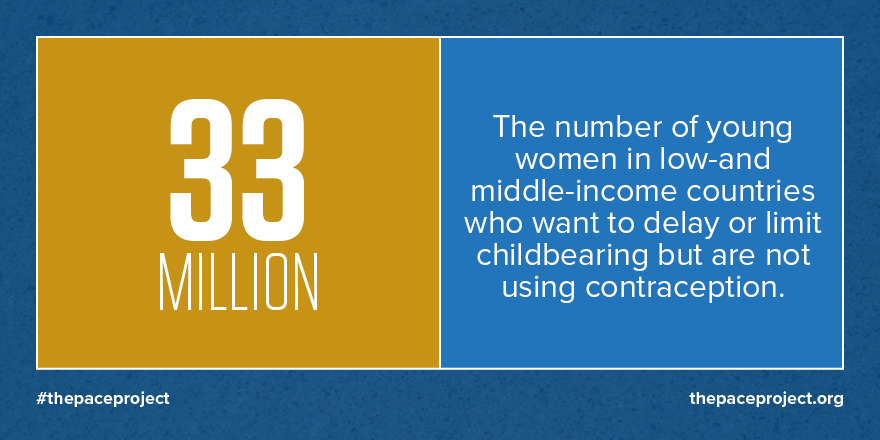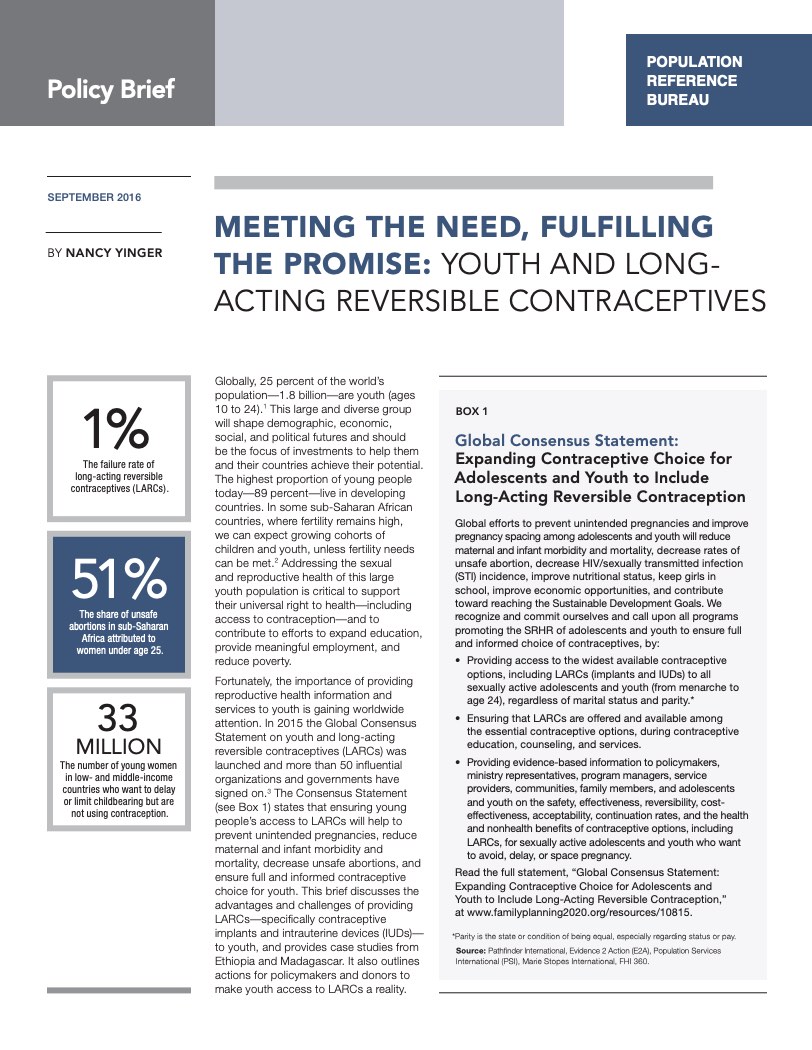
Meeting the Need, Fulfilling the Promise: Youth and Long-Acting Reversible Contraceptives
Globally, 25 percent of the world’s population—1.8 billion—are youth (ages 10 to 24). This large and diverse group will shape demographic, economic, social, and political futures and should be the focus of investments to help them and their countries achieve their potential. The highest proportion of young people today—89 percent—live in developing countries. In some sub-Saharan African countries, where fertility remains high, we can expect growing cohorts of children and youth, unless fertility needs can be met.

Addressing the sexual and reproductive health of this large youth population is critical to support their universal right to health—including access to contraception—and to contribute to efforts to expand education, provide meaningful employment, and reduce poverty. This brief, funded by USAID under the PACE (Policy, Advocacy, and Communication Enhanced) project, discusses the advantages and challenges of providing LARCs—specifically contraceptive implants and intrauterine devices (IUDs)—to youth, and provides case studies from Ethiopia and Madagascar. It also outlines actions for policymakers and donors to make youth access to LARCs a reality.

 ">
">